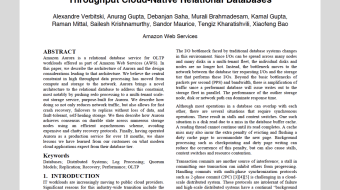Customer-obsessed science


Research areas
-
September 26, 2025To transform scientific domains, foundation models will require physical-constraint satisfaction, uncertainty quantification, and specialized forecasting techniques that overcome data scarcity while maintaining scientific rigor.
-
Featured news
-
NeurIPS 2023 Workshop on Deep Generative Models for Health2023Writing radiology reports from medical images requires a high level of domain expertise. It is time-consuming even for trained radiologists and can be error-prone for inexperienced radiologists. It would be appealing to automate this task by leveraging generative AI, which has shown drastic progress in vision and language understanding. In particular, Large Language Models (LLM) have demonstrated impressive
-
Transfer learning, reinforcement learning for adaptive control optimization under distribution shiftNeurIPS 2023 Workshop on Distribution Shifts (DistShifts)2023Many control systems rely on a pipeline of machine learning models and handcoded rules to make decisions. However, due to changes in the operating environment, these rules require constant tuning to maintain optimal system performance. Reinforcement learning (RL) can automate the online optimization of rules based on incoming data. However, RL requires extensive training data and exploration, which limits
-
NeurIPS 20232023We study the convergence behavior of the celebrated temporal-difference (TD) learning algorithm. By looking at the algorithm through the lens of optimization, we first argue that TD can be viewed as an iterative optimization algorithm where the function to be minimized changes per iteration. By carefully investigating the divergence displayed by TD on a classical counter example, we identify two forces
-
EuroSys 20242023Sparse Convolution (SC) is widely used for processing 3D point clouds that are inherently sparse. Different from dense convolution, SC preserves the sparsity of the input point cloud by only allowing outputs to specific locations. To efficiently compute SC, prior SC engines first use hash tables to build a kernel map that stores the necessary General Matrix Multiplication (GEMM) operations to be executed
-
Journal of Imaging2023Several sign language datasets are available in the literature. Most of them are designed for sign language recognition and translation. This paper presents a new sign language dataset for automatic motion generation. This dataset includes phonemes for each sign (specified in HamNoSys, a transcription system developed at the University of Hamburg, Hamburg, Germany) and the corresponding motion information
Collaborations
View allWhether you're a faculty member or student, there are number of ways you can engage with Amazon.
View all














































